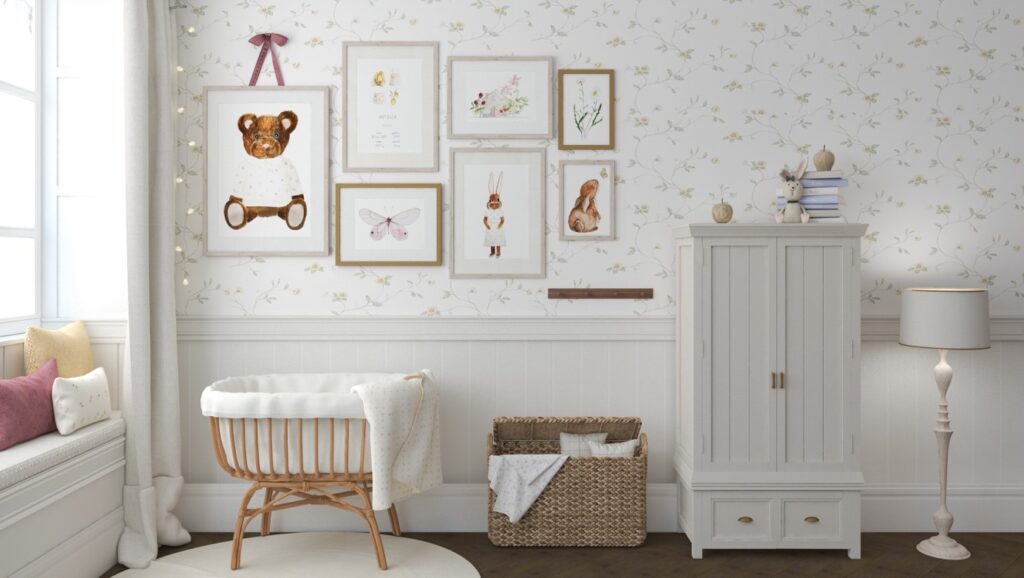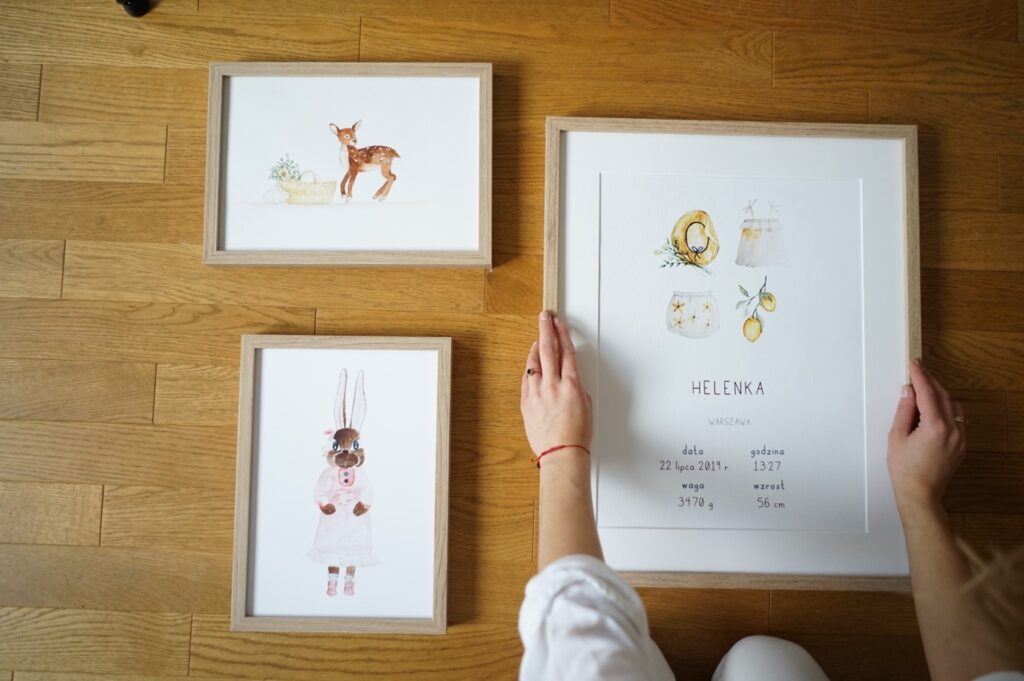A guide for you
How to decorate a child's room? Advises the architect
Every parent wonders how to decorate a child's room nicely. This is a challenge on many levels: Children grow and their needs change as they get older. Certainly, a room for a baby looks different, then a nursery child's room, and then a student's room. So How to develop a small child's room to make rearrangements easier and less costly? Practical advice is provided by Ola Węgiełek-Król, interior designer and mother of a daughter.
Children's room - functional layout
As you plan a children's room for a new family member, it's worth joining like an interior designer. The professional method is to size and draw the room.
- Measure your child's room by the outline of the walls.
- Determine the height of the room.
- Measure all door and window openings: their width and height.
- If you are planning a wall decoration, draw the so-called views, i.e. the width and height of the walls along with openings, such as for wall sconces.
- Based on this, you can create a dimensioned projection of the room, in which it is easier to plan out the furnishings and decorations.
- Create 3 versions of functional layouts. Compare them with each other and choose the best one. In this way, you will avoid basic arrangement mistakes, such as lack of space for key furniture for the baby's room.
Baby room zones
A baby room for a girl or boy should be plan several years ahead, taking into account how the child and his needs will change over that time. It can be assumed that a larger renovation or simply refreshing the walls will be necessary when the toddler goes to kindergarten. In the meantime, however, the child's room will change its character. At the very beginning, you can determine the basic zones in this room.
1. sleep and rest area
A room for a baby should take into account cradle with dimensions of 90 x 40 cm. However, over time it will be necessary to insert cribs with rungs (min. 120 x 70 cm), until finally beds for an older child (approx. 200 x 90 cm). A practical solution can be a so-called ""solution". rising bed, that is, extending adequately to the height of the child. Space for a larger bed can be found, for example, after putting out a feeding chair, which will no longer be needed for a several-year-old.

2. fun zone
In a baby's room it will be useful space for an educational mat, which is the child's first place of play. However, over time, toys will begin to arrive, often over-presented by family and relatives. It is worth taking care of their organization and attractive display In the room. For this purpose, you can use shelves, such as for stacking plushies.
Tip: You can hide some of the toys - for this it is useful, among other things. wicker trunk or canvas bag with welts. Toys that are tucked away for a period of time and then made available to the child may prove to be attractive to the toddler again.
3. learning zone
When the child turns one year old, it is worth thinking about buying a table and chairs, where the toddler will be able to draw, paint, paste and stick with modeling clay. Such furniture should be adjusted for height child, however you can buy them with a light stockas the several-year-old is growing fast. When designating a learning area, take into account that in the future the table will have to be swap to a bigger desk With drawers for notebooks and school supplies.
4. storage area
Initially, this location may include changing table i dresser For diapers, clothes and additional accessories. With time, the number of clothes will increase and they will start to take up more space. Then, in place of the changing table and chest of drawers, you can insert a a larger closet with drawers, shelves and a section for hangers. In the storage area, it is also good to include furniture for toys, such as. showcase with shelves For books, puzzles and board games.
Finishing the room
In addition to the functional aspect, it is also important to have an attractive design for the baby's room that will appeal to both parents and toddler. To create a thoughtful arrangement, choose:
- color base - that is, the finish of the walls and floors, should be consistent and subdued, so white, gray and beige work well,
- accent color - will be on smaller-sized furnishings, such as pillows, rug, bedding, curtains, you can choose any color, such as pink, blue, green.
The advantage of the universal color base is easy color change accenting in the future, such as when a child already has a favorite color.
How to decorate a child's room?
A popular decorative element in a child's room is the so-called "baby room. wall gallery. This composition of wallpaper and pictures suspended symmetrically with respect to the axis. Currently, the choice of wallpaper for a child's room is really wide. Wallpapers that fit into the chosen color base can have a variety of fairytale motifs. You can match them with colorful pictures and baby tag In a frame with passe partout.

Where to get inspiration for children's room decor?
The Internet is a treasure trove of inspiration for decorating a child's room. Attractive color combinations and clever tricks on the use of space can be found, for example, on the Pinterest platform. By creating an account there, you can create thematic boards, in which you will save the arrangements you are interested in. You can also create a separate folder on your computer. It is crucial to be able to open all photos of interior design elements and compare them with each other. Thanks to this you can assess whether they are sure to match.
Check before you buy
Although it's most convenient to look online for inspiration, it's a good idea to look before you buy see the design elements of the children's room in person. The monitor may misrepresent the color, so I recommend you go to stationary stores, as well as order samples, such as wallpaper for a child's room.
Planning purchases for the child's room
You can do the design of a child's room for free, but the furnishing itself is a burden on the household budget. Does this mean that you have to give up your dream decor? Not necessarily - you can approach it like a professional interior designer.
- Determine your budget for your child's room.
- Create a so-called dream table, which is a list of things to buy.
- Adjust the prices of the equipment and compare them with your budget.
- If the price exceeds the budget, Circle the items you need with one color and the items you want most with the other.
- Look for cheaper substitutes for essential items, such as on sale, second hand.
- Mark the items in your child's room that you can buy later when you have extra budget.
- Once again, take stock of your costs. You may find that you don't have to give up your dream furniture and decorations, or you may be able to keep some of these items.
How to decorate a child's room? Summary
The baby's room needs to be arranged even before the new family member is born, but over time the room will need a metamorphosis. Planning your baby's room several years ahead will help you save time and money. At the very beginning, it is a good idea to designate 4 basic zones of the room. Creating a functional layout will make it easier for you to furnish. For the finishing touches, choose a universal color base that provides free change of accent colors.
